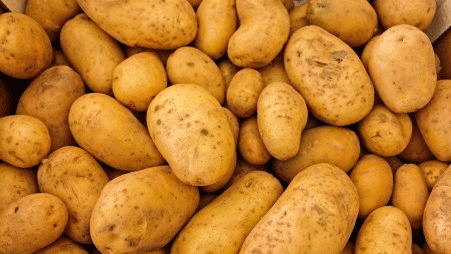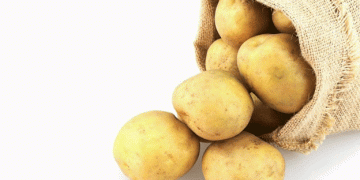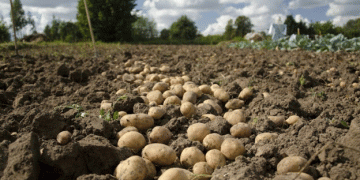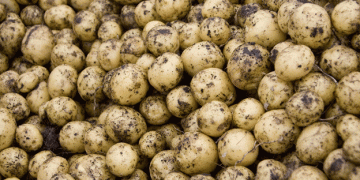Overproduction and rising costs lead to losses
Farmers are facing tough times: potato prices have dropped to levels that do not even cover half of production costs. With potato planting areas significantly increased – by 47,000 hectares above plan – farmers are forced to sell their crops for next to nothing.
The cost of potato production in Bangladesh is estimated at Tk17.26 (US$0.16) per kg, including land preparation, fertilizers, seeds, labor, irrigation, pesticides, and land rent. However, farmers sell it at Tk10-14 (US$0.09-0.13) per kg, and in some regions, prices have dropped to Tk8 (US$0.07) per kg, causing huge losses to producers.
Factors Behind the Price Drop
- Increased potato acreage – This season, potato acreage has exceeded the planned volume, reaching 524,000 hectares, 67,000 hectares more than last year.
- Overproduction – Excess supply has inevitably led to lower prices, especially during the peak harvest period.
- Sharp rise in storage costs – Cold storage costs have risen to Tk8 per kg, making long-term storage unprofitable.
- Lack of effective marketing – Farmers are forced to sell to middlemen who reap the maximum benefit.
Why did farmers increase plantings?
In 2023, potato prices reached Tk80 (US$0.73) per kg, prompting farmers to expand their acreage in the hopes of repeating their success. However, the traditional problem of the agricultural sector – price swings – played against producers: due to excess supply, prices collapsed.
Farmers like Nafisul Islam from Shibganj are in no hurry to harvest, hoping for higher prices. However, given the high cost of storage, this could lead to even greater losses.
Developing processing
According to experts, the only sustainable solution is to expand the potato processing market: production of starch, chips, mashed potatoes, potato flakes. In neighboring India, for example, potato flake exports are growing rapidly, allowing farmers to make a stable profit.
Group marketing and cooperation
Farmers can unite in groups, which will allow them to control the volume of supplies to the market, avoiding sharp price fluctuations. As Professor Jahangir Alam noted, farmers should work together: 10 farmers grow potatoes, and one is engaged in marketing the product.
Government support and price regulation
Introducing a minimum purchase price for potatoes or subsidizing storage could save farmers from ruin.
Diversification of sales market
Export can be a solution to relieve the domestic market. Bangladesh already supplies potatoes to Southeast Asian countries, but the export volumes are still insufficient.
Future of the potato market
If farmers continue to thoughtlessly increase their planting areas, the market will continue to suffer from cyclical crises. It is time to think about modernizing agriculture and introducing new approaches to marketing and processing potatoes.
What measures do you think could help farmers stabilize the potato market? Share your opinion in the comments!






